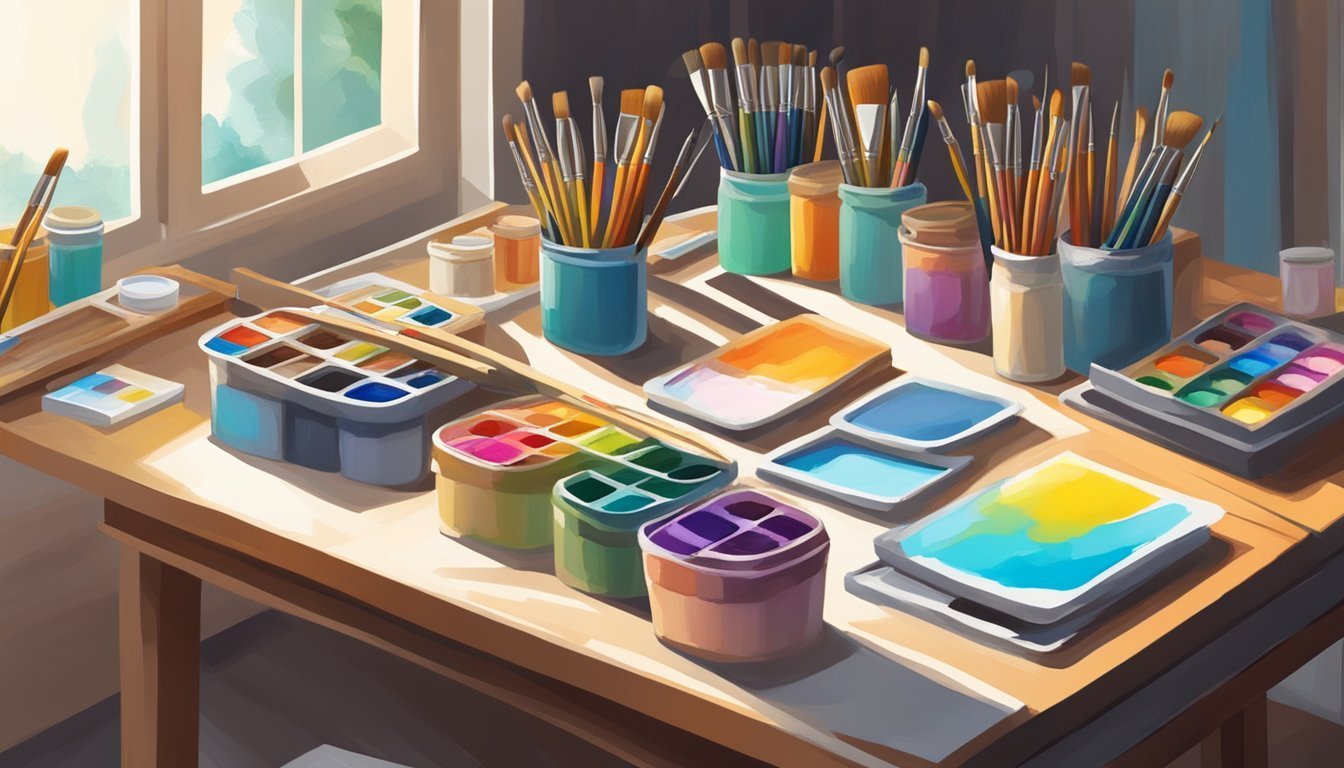Getting into painting can be a rewarding experience, especially when you have the right kit.
Whether you’re a beginner or a seasoned artist, you can elevate your creative journey by maximizing your painting kit. A few simple tips can help you enhance your painting experience.
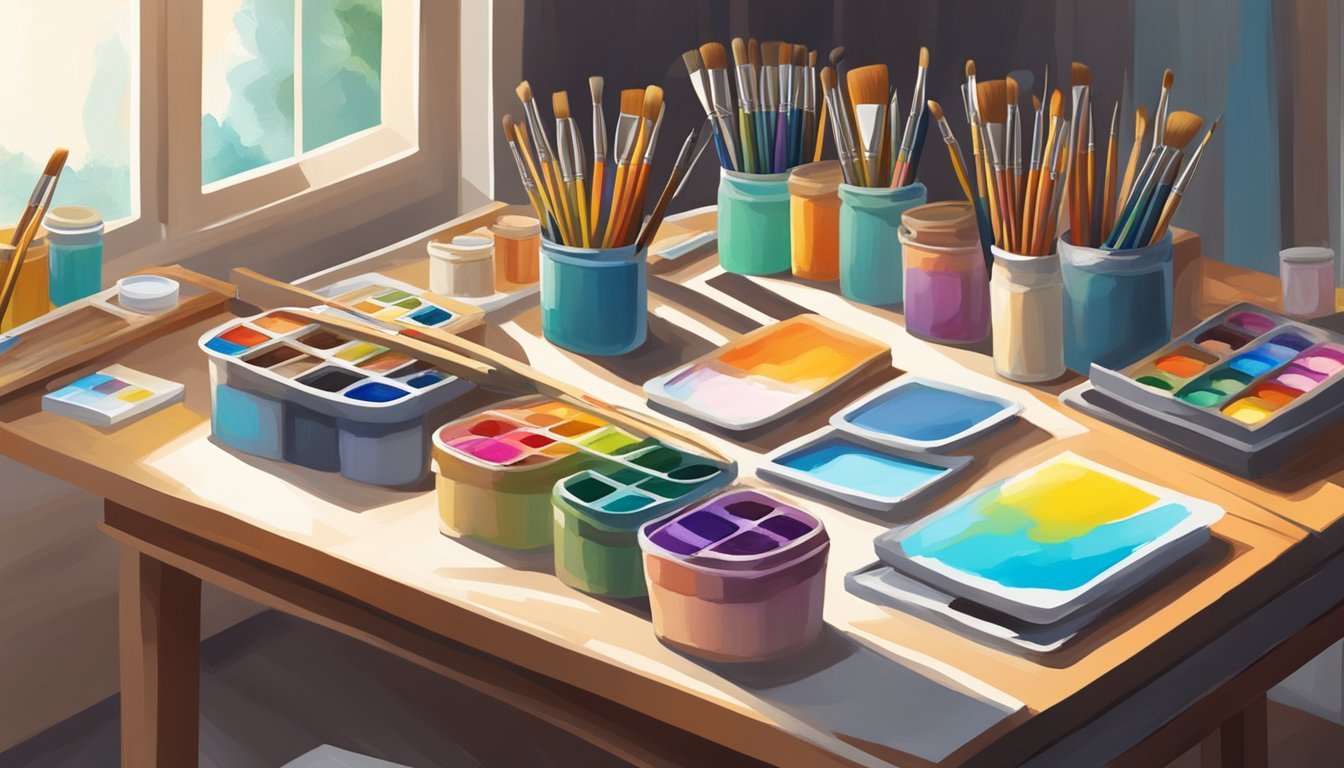
It’s easy to feel overwhelmed by the different materials and techniques available, but don’t worry.
You just need to know how to use your supplies effectively and make the most out of what you have. Following practical advice will help you see noticeable improvements in your artwork and enjoy the process even more.
1) Use Quality Brushes

When you’re working on a painting kit, having the right brushes can make a big difference.
Quality brushes can hold more paint and provide better control over your strokes.
Investing in a few good brushes allows you to achieve finer details.
Synthetic brushes are often great for acrylic paints, while natural hair brushes work well with oils.
Be mindful of brush sizes too.
Smaller brushes are perfect for intricate areas, while larger ones can cover more space quickly.
Always keep your brushes clean and store them properly.
This helps maintain their shape and longevity, ensuring you get the best results with each project.
Using quality brushes can elevate your painting experience and help you create pieces you’ll be proud of.
2) Mix Your Own Colors
Mixing your own colors can take your painting skills to the next level.
It allows you to create shades that aren’t available in store-bought tubes.
Start with the primary colors: magenta, yellow, and cyan.
With just these, plus black and white, you can create a wide range of hues.
Experimenting with these will help you understand how colors interact.
When mixing colors, pay attention to their temperatures.
Warm colors can make your piece pop, while cooler tones often create a calming effect.
This can enhance the overall feel of your artwork.
Don’t forget complementary colors! Adding a color from the opposite side of the color wheel can dull a shade.
For instance, mixing blue with orange can produce a more muted and interesting tone.
Practice is key.
The more you mix, the more confident you’ll become in matching the colors you see in your reference photos or real life.
Start small and gradually mix larger quantities as you gain confidence.
Happy painting!
3) Try Varied Techniques
Experimenting with different painting techniques can elevate your artwork significantly.
Don’t be afraid to mix it up and find what feels right for you.
Using large brushes can create bold strokes and help simplify details in your work.
This approach is great for loosening up your style and adding energy to your pieces.
Incorporating tools like palette knives can also add texture and dimension.
They allow for unique patterns and effects that brushes might not achieve.
Try layering colors with various application methods.
For instance, dabbing, splattering, or even using your fingers can produce interesting results.
You might also explore different mediums, such as acrylics, oils, or watercolors.
Each medium has its own characteristics and techniques, giving you a wider range of possibilities.
Finally, consider adding in mixed media elements.
Collage materials or pastels can offer new dimensions to your artwork, making it more dynamic.
Embrace the learning process and enjoy discovering what techniques resonate with you.
Invest In Palette Knives
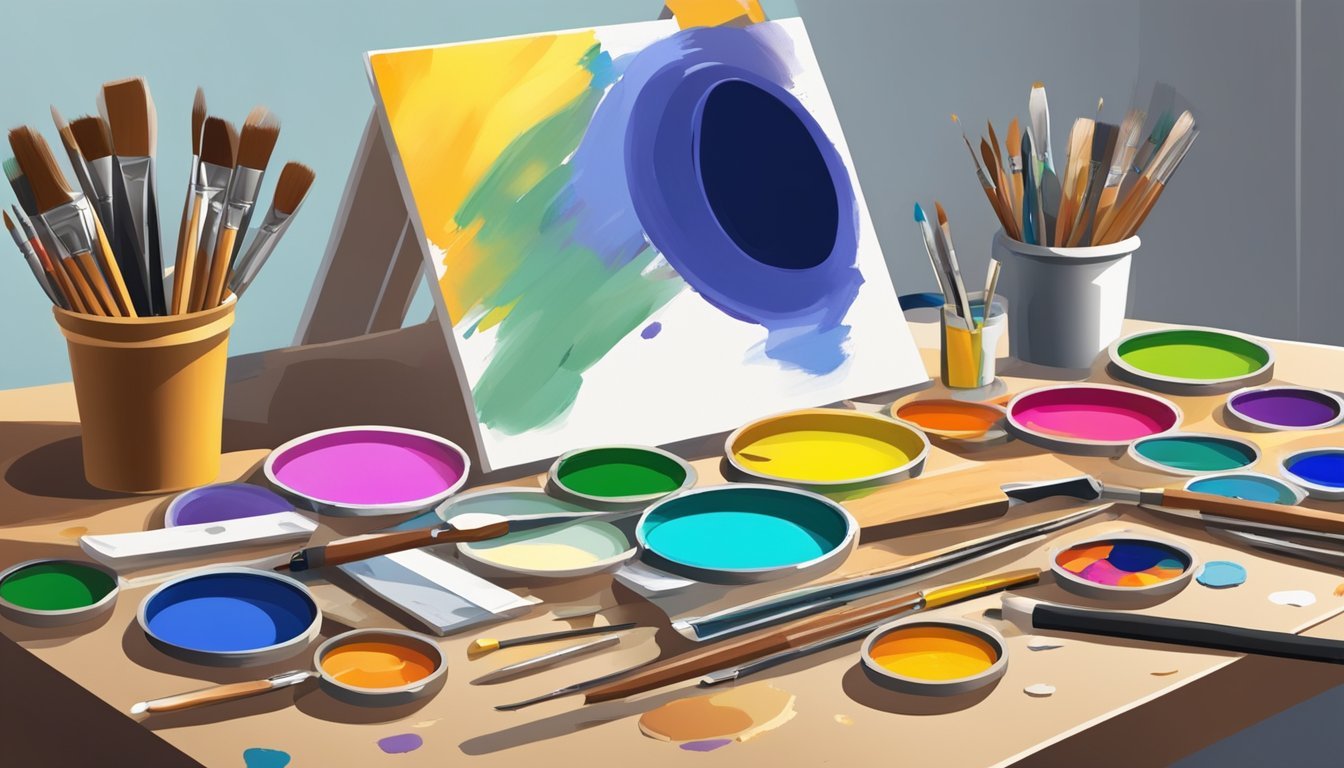
Adding palette knives to your painting kit can elevate your artistry.
They offer a unique way to apply and manipulate paint, giving you creative freedom.
Palette knives come in various shapes and sizes, allowing for different techniques.
You can create smooth strokes or textured effects depending on how you use them.
When using a palette knife, load the edge with a small amount of paint.
Dab it on your canvas for a clean application.
Keep in mind that you often need to reload after each stroke.
Experiment with scraping techniques.
Apply a thick layer of paint and scrape away sections to reveal underlying colors.
This method adds depth and interest to your work.
Don’t forget to choose quality knives.
A sturdy, flexible knife allows for better control and precision.
Investing in the right tools will make a noticeable difference in your painting experience.
5) Keep Your Workspace Organized
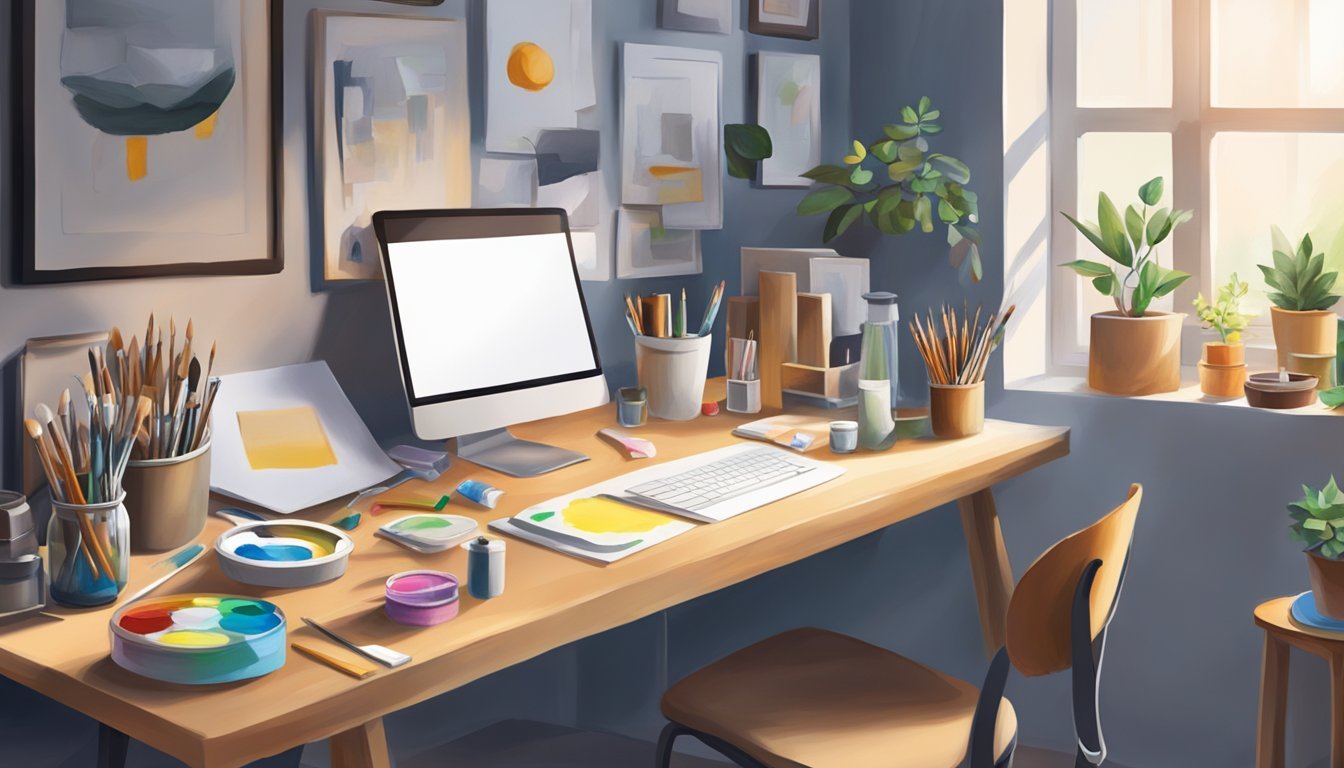
An organized workspace can make a big difference when you’re using your painting kits.
Start by clearing your area of any clutter.
A clean surface allows you to focus solely on your artwork.
Use containers or trays to keep your paints, brushes, and tools separated.
This not only saves time but also helps in quickly finding what you need.
Label your containers if that helps you sort through your supplies.
Always put things back in their designated spots after you finish using them.
This habit prevents a buildup of mess and makes setting up for your next project easier.
Consider creating zones for different activities.
One section could be for mixing colors, while another could hold finished pieces.
This way, you maintain an organized flow while working.
Finally, consider the lighting in your workspace.
A well-lit area helps you see the details in your work and can keep you motivated.
An organized, bright workspace can really enhance your painting experience.
Explore Different Surfaces
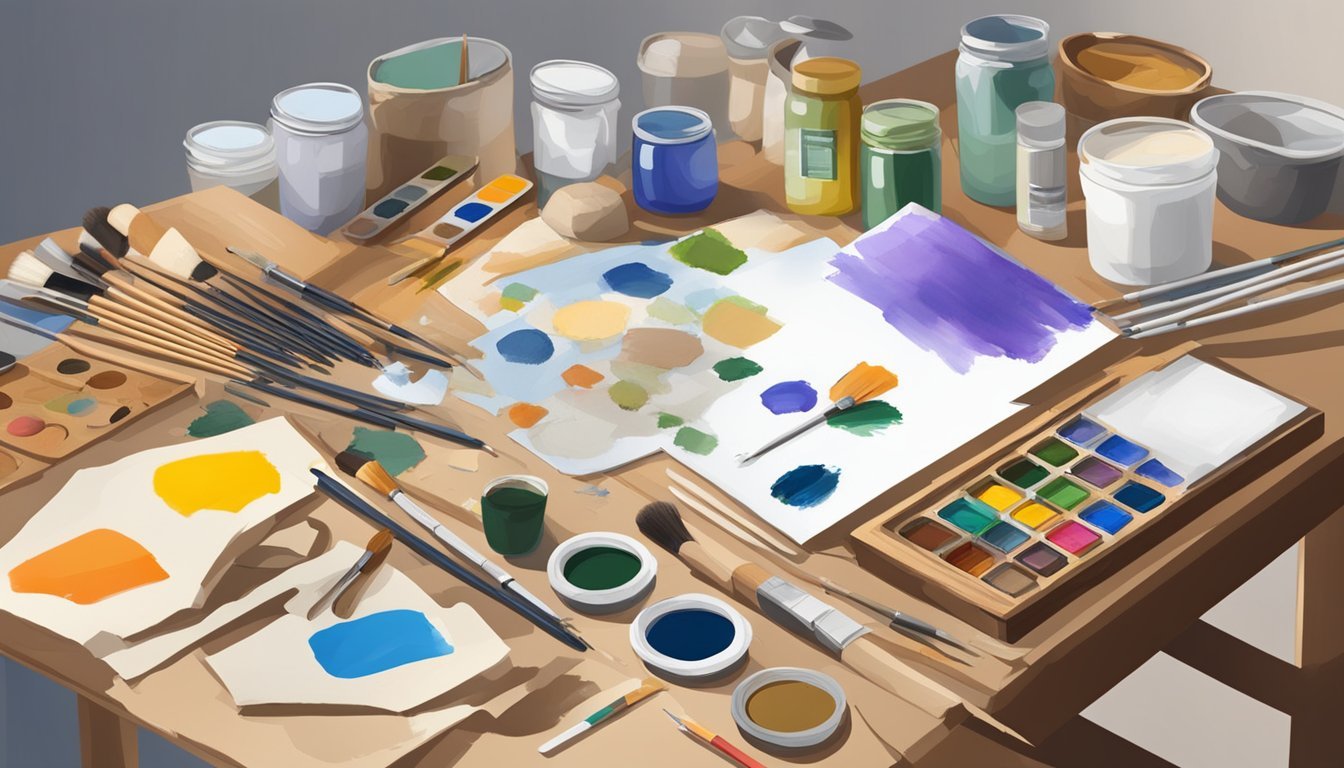
Experimenting with different surfaces can elevate your painting experience.
You can use canvas, wood, paper, or even fabric to see how each material interacts with your paint.
Each surface has its own texture and absorbency.
For example, canvas provides a sturdy feel and can handle heavy layers, while paper is great for quick sketches or studies.
Don’t shy away from unconventional surfaces.
Consider painting on reclaimed wood or even rocks.
These unique choices can lead to unexpected and fun results.
Prepare your surfaces properly before you start.
Make sure they are clean and primed if necessary.
This ensures that the paint adheres better and lasts longer.
Using a handheld sprayer can also be a game changer on larger surfaces.
It allows for an even application without the risk of streaks.
Remember to let colors dry between layers for crisp effects.
This practice helps preserve the vibrancy of your paint and enhances the overall look of your artwork.
7) Watch Online Tutorials
Watching online tutorials can significantly enhance your painting skills.
There are countless resources available that cater to all levels, from beginners to advanced artists.
You can find a variety of styles and techniques by searching for specific subjects, like acrylic or watercolor painting.
These tutorials often break down complex methods into easy-to-follow steps.
Look for channels that resonate with your interests.
Some artists even provide free classes that can help you build confidence without spending anything.
Take notes while watching to remember key techniques.
You can practice along with the video, which makes learning interactive.
Don’t hesitate to experiment with what you learn.
Every artist has a unique style, so feel free to adapt the techniques to fit yours.
Watching others can also spark inspiration for your own projects.
The more you expose yourself to different approaches, the more versatile your skills will become.
Understanding Your Painting Kits
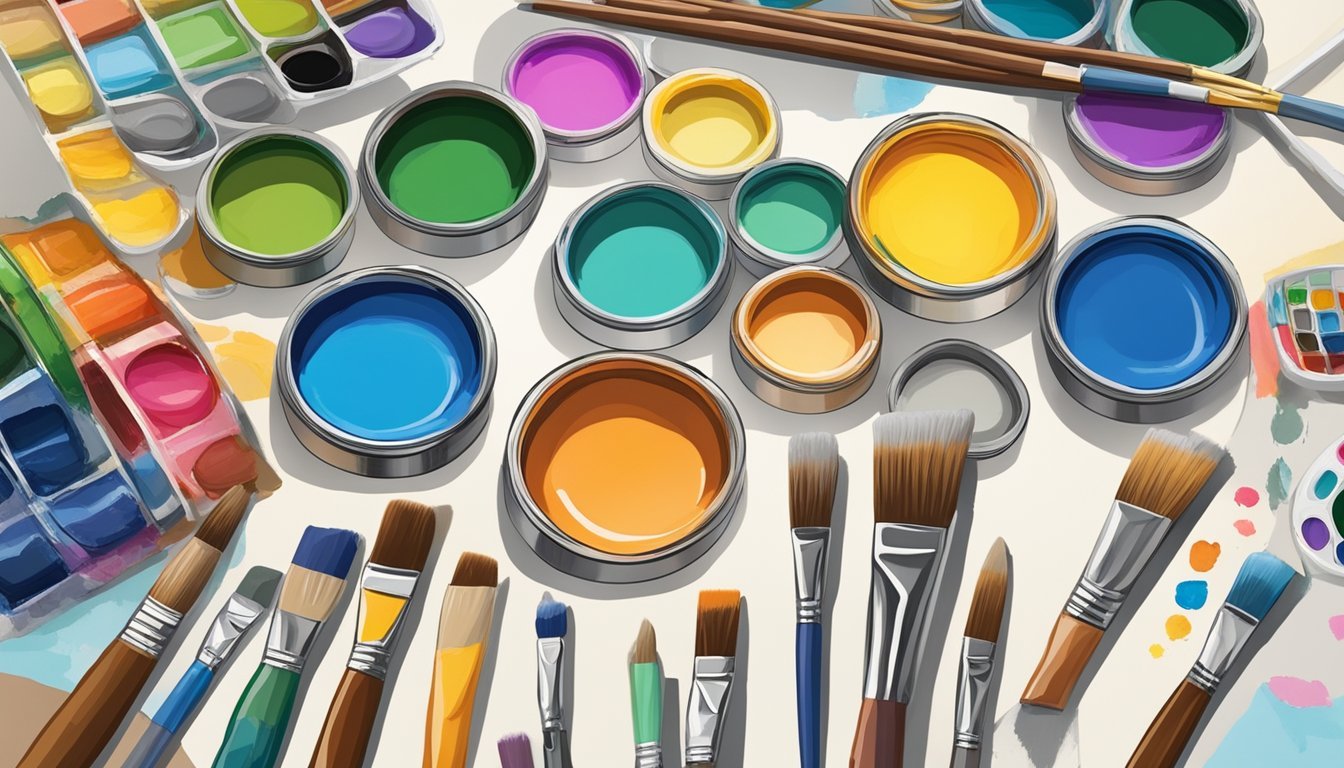
Getting familiar with your painting kits can enhance your creativity and improve your overall experience.
Each kit has unique features that cater to different styles and preferences.
Here’s a closer look at the types of kits available and their essential components.
Exploring Different Kit Types
Painting kits come in various types, each designed for specific techniques.
Some popular options include:
-
Acrylic Kits: These include acrylic paints, brushes, and canvases. They dry quickly and allow for layering.
-
Watercolor Kits: Featuring watercolor paints, specialized brushes, and paper, these kits let you create soft, blended artwork.
-
Oil Kits: Typically equipped with oil paints and appropriate brushes, these kits enable rich color blending and layering.
-
Paint by Numbers: These kits include pre-printed canvases, paints, and brushes. They’re ideal for beginners looking for a structured approach.
Selecting the right type of kit can help you enjoy the painting process and achieve the desired results.
Key Components of a Painting Kit
Each painting kit includes vital components that you should understand:
-
Paints: The centerpiece of your kit, choose high-quality paints for better pigmentation and mixing.
-
Brushes: Different sizes and shapes allow you to create various textures and details. For example, flat brushes are great for washes, while round brushes are perfect for fine details.
-
Canvas or Paper: Use the appropriate surface for your paint type. Acrylics can go on canvas or thick paper, while watercolors need specially designed paper.
-
Palette: This is where you mix your colors. A disposable palette or a traditional one can work, depending on your preference.
-
Water Container or Cleaner: Essential for washing brushes between colors, maintaining your tools is crucial for quality work.
Understanding these components helps you utilize your painting kit to its fullest potential.
Preparing Your Workspace for Painting
Creating a well-organized and safe workspace can significantly enhance your painting experience.
Focusing on how you set up your painting station and organizing your supplies can lead to better results and make the process more enjoyable.
Setting Up Your Painting Station
First, choose a well-lit area where you can concentrate.
If possible, go for natural light.
If not, use bright artificial lights to ensure clear visibility.
Clear the Space: Remove any furniture or items that could get in the way or stained during the project.
Protect Surfaces: Lay down drop cloths or old newspapers to catch any spills or drips.
This helps keep your area clean.
Arrange Your Tools: Set out all your painting tools, including brushes, rollers, trays, and paint cans.
Having everything you need within easy reach reduces frustration during your work.
Ventilation Matters: Make sure to open windows or use fans to keep air flowing, especially if you’re using strong-smelling paints.
Organizing Supplies for Efficiency
When organizing supplies, start with categorization.
Group similar items together to make finding them easier.
Use Containers: You can use bins or caddies to separate brushes, rollers, and other tools.
This keeps everything tidy and organized.
Label Everything: Labeling containers can save time.
You’ll know exactly where to look for that specific brush or color.
Stock Essentials: Make sure you have extras of frequently-used items, like painter’s tape and drop cloths.
It’s better to have a little too much than to run out mid-project.
Accessibility is Key: Keep frequently-used supplies and tools within arm’s reach to save time and energy as you paint.


